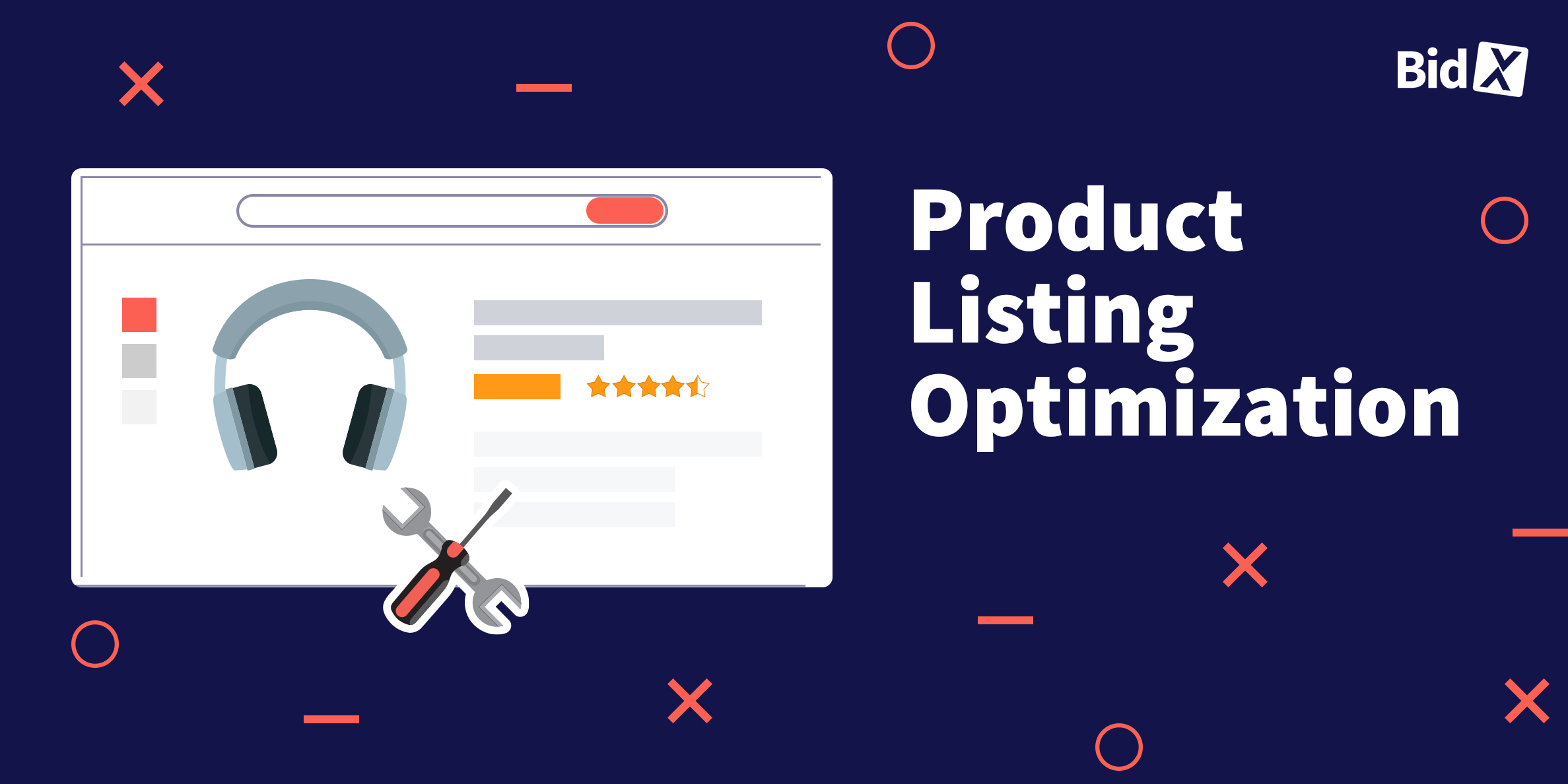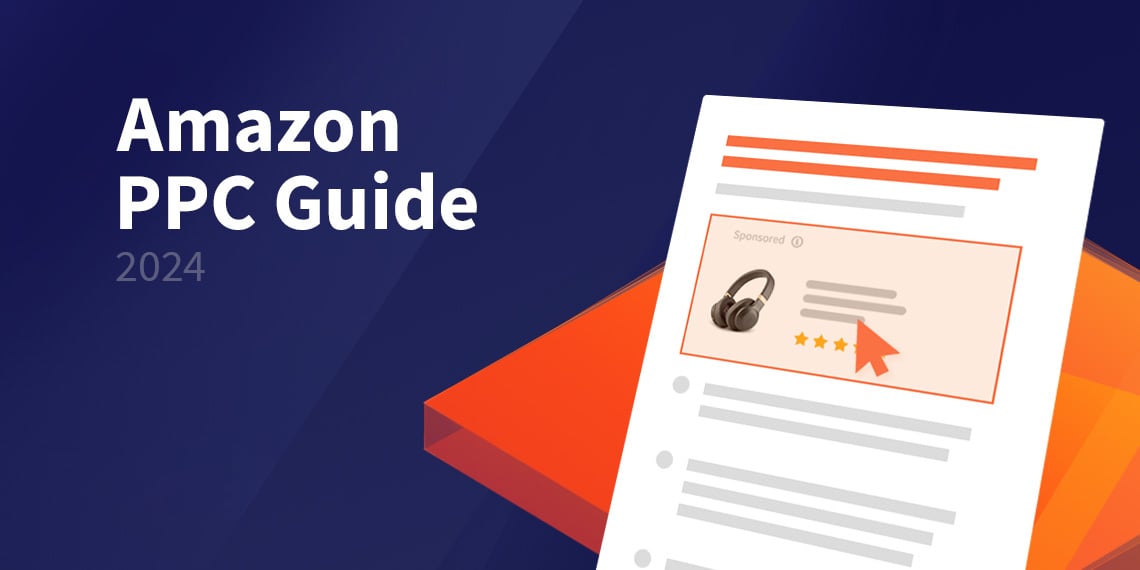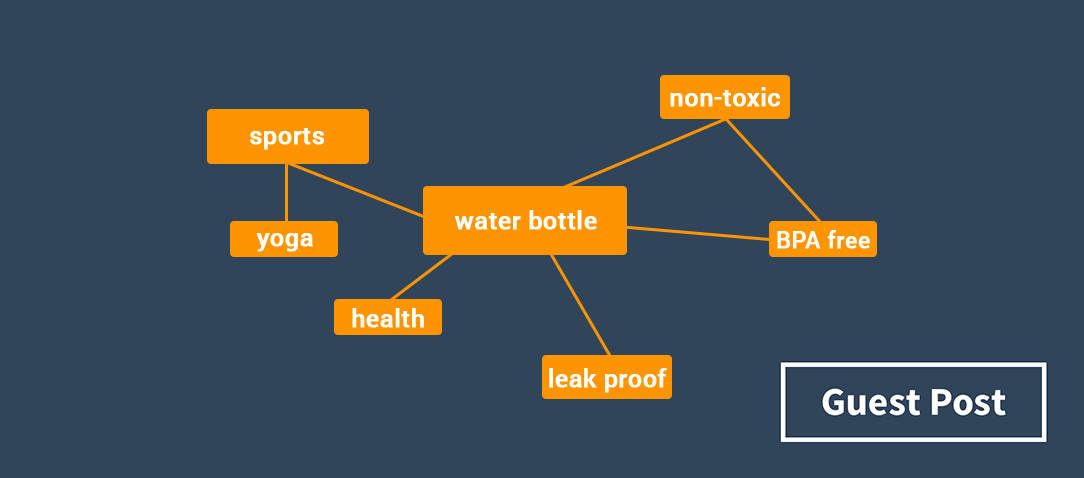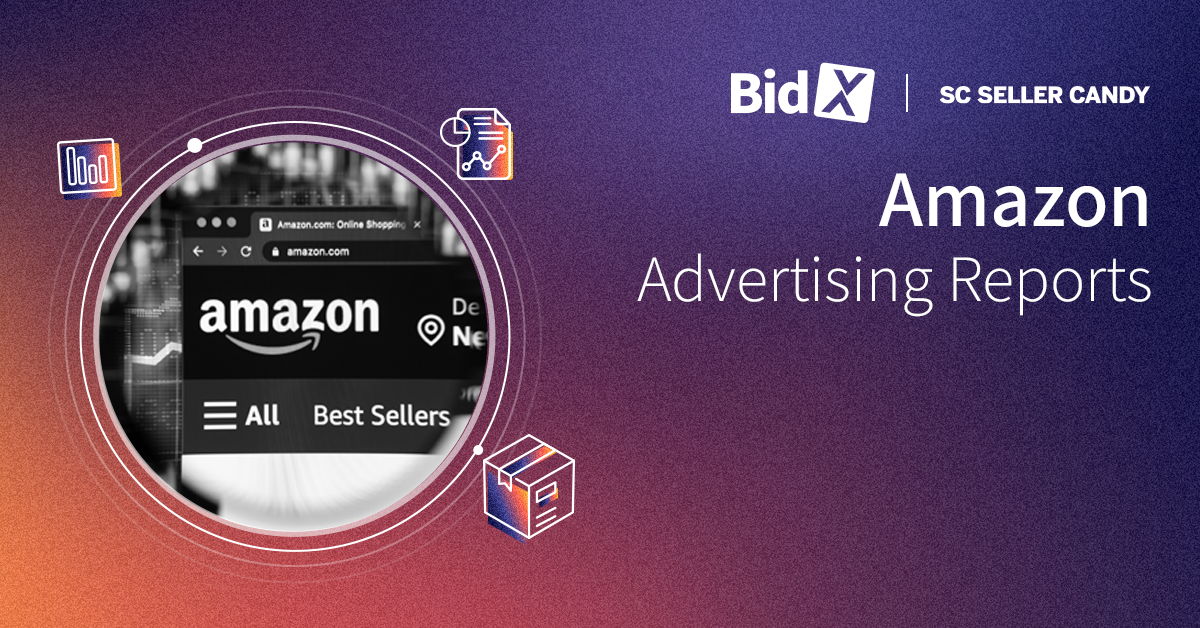Why Amazon product listing optimization is important for SEO
The difference between a poor Amazon product listing and a well-optimized one can be $1000s in sales each month.
Amazon essentially operates as an eCommerce search engine to help shoppers find products they want. But with millions of products for sale on the Amazon marketplace, competition is fierce for the top rankings.
You can improve your search placement if you optimize your product listing. A few tweaks can send the right signals to Amazon's search algorithm and move you up the rankings.
This article looks at the critical components of an Amazon product listing and suggests how you can improve yours for better search placement.
What is Amazon Product Listing Optimization?
Amazon product listing optimization is the process of revising and improving the four major elements of your product listing. Those elements are:
- Product title
- Product photography
- Feature bullet points
- Product description
Why it’s worth spending time optimizing your Amazon product listing
When you first list your product for sale on the Amazon marketplace, you’re likely keen to publish quickly so you can start making money.
There’s no problem with this, as the saying goes; ‘done is better than perfect.’ But, once you’ve got past the initial rush to get the product on sale, you should spend a bit of time optimizing your Amazon listing.
Why? Because 70% of users stick to the first page of search results
The implication is clear; if your product isn’ton at least the first page for your target keyword, you aren’t going to need to place a restock order with your manufacturer any time soon.
To help you make it to the first page of the search results, you first need to understand how Amazon search works.
Amazon A9 Algorithm
As an Amazon seller, you should stop thinking of the platform as an eCommerce marketplace and start thinking about it as a search engine.
Google’s aim is ‘to organize the world’s information and make it universally accessible and useful.’
But Amazon’s aim is strictly commercial, only returning products for a search term it thinks will result in a sale.
Amazon uses a search algorithm to organize and rank the 350 million products for sale on the marketplace. It’s called A9 and uses various criteria, each carefully weighted, to return products for a shopper’s search term.
Amazon keeps private the precise nature of each criteria’s weighting. But we do know that the following play a significant part:
- The number of sales of the item
- Number and quality of customer reviews
- The good standing of the seller’s account
- The keyword relevancy of the product’s listing
Performing search engine optimization (SEO) for the Amazon algorithm helps you win a better ranking placement in organic search and win more sales.
Note: Amazon updated the A9 algorithm in the Summer of 2020. Though no official announcement has been made, some people call the current algorithm A10.
Here are seven ways to optimize your Amazon product listing for better search placement.
7 ways to optimize your Amazon product listing
1. Include all of your primary target keywords in your Product Title
Amazon provides 250 characters of space to write your product title. But you don't need to keyword stuff a title, as the A9 algorithm searches all text in a listing.
That said, you should include your top keywords in your title because that's what a customer sees alongside your image. You want a shopper to see your main keywords so they can make the association that it’s your product they’re looking for.
It’s also worth placing your primary keywords at the start of your title. On mobile, Amazon doesn’t display as many characters as the desktop website, so if you use your main keywords first, every shopper will see them.
Try to make your title readable, rather than randomly entering words, and don’t use subjective phrases like ‘top selling’ or ‘best quality’ —shoppers rarely use them in search terms, and Amazon may judge your use of them as misleading.
Here are two examples. The first one only uses 4 terms, which makes the title easy to read. But they are not using the whole potential of the product title.

This second example uses a lot more keywords, for example a few terms that narrow down typical characteristics and some opportunities to use. Although the title is not so nice to read, it will probably be more relevant for the algorithm. Especially if a user enters search terms such as "Bluetooth headphones" or "deep bass headphones", which are mentioned directly in the title.

A mixture of these two variants would probably be best for the algorithm and the shopper.
If you’re struggling with keyword ideas, one tip is to check your paid advertising logs to see which keywords converted to a sale. Optimize your title by adding in those keywords.
2. Your photos are critical
Take a moment to think about how you shop online. What makes you click on one product over another?
Chances are, it’s the product image that first attracts your attention and makes you click through to the entire product listing. Photos help sell a product, and each sale you achieve helps boost your search placement.
Because product photos are so critical to the overall look of an eCommerce site, Amazon has comprehensive image requirements. Your main image should be an actual photo of the product for sale—no mockups or illustrations permitted.
The photo background should be white, and the product must fill 85% of the frame. Like this:

While your main product photo gets the initial click, the rest of your photos provide a chance to sell the product’s features and benefits.
An infographic image like this one can help a shopper make a purchasing decision:

Another helpful image type is a lifestyle photo that shows your product in use. Lifestyle photos are especially useful for products that are not widely known or when you want to illustrate the size of a product.

Amazon sets a maximum of nine images (or short videos) for a product listing, and they recommend you upload at least six photos and one video.
Make sure to check image size requirements before you upload them; for the zoom feature to work, your images need to be of sufficient size.
As your product photography is such a critical part of your listing, you might consider using a professional photographer to get the best quality images. If you can't afford this and you decide to take the pictures by yourself, you should make sure that the photos look professional and of high quality.
You could also think about using videos to show your product even better. This is especially helpful if you sell clothes and want to show how they fit and look in person.
3. Use bullets to convert features into benefits
The bullet points element provides an opportunity to sell your product’s features and benefits. Amazon recommends you keep your bullet points under 1,000 words for all five points collectively.
The bullet points display under the general product information in the desktop version of Amazon. But some Amazon sellers don’t take full advantage of this prime position and only enter basic product information and dimensions.
However, a well-optimized bullet point section sells the benefits of the product to shoppers.
You can see in the example below how the seller has packed their bullets with many attractive benefits, like a long playtime or different sound modes.

Instead of simply adding a few facts about your product, think about how it can improve someone’s life and pack your bullets with benefits!
4. Your product description should provide all the small details
When someone shops for a product, it’s because they’re looking for a solution to a problem.
That problem could be feeling cold, so they want to buy a jumper, or they’re upset by a dirty carpet, so they need something to clean it.
To give your product the best chance of being recognized as the solution to a shopper’s problem, you need to provide as much detail about your product as possible.
In the product details section, provide the measurements, specifications, materials, and other relevant information. It could be the smallest detail that seals the deal in a shopper’s mind and makes them purchase your product.

Your product description also provides the opportunity to add some more long-tail keywords you couldn’t squeeze into your title.
You’re not permitted to include any time-sensitive offers in your product details, nor can you make unsupported or subjective claims about your product.
Amazon says product details are there ‘to assist the customer in understanding the product.’
4.1 A+ Content
Product descriptions on Amazon usually consist of long passages of text, which are quite unclear. But if you register with Amazon as a brand, you can also use what’s called A+ content as your product description.
A+ content permits additional images and different modules in the product details section. Using A+ content helps you to explain certain features in detail and looks way more attractive than a normal product description - here’s an example.

As you can see in this example, the product description has been completely replaced by images with short explanatory texts.
5. Use backend keywords to improve search visibility
Amazon’s A9 search algorithm doesn’t need you to repeat keywords in your product title, bullets, and description. As long as the keyword appears once, Amazon will consider it a relevancy factor for inclusion in the search results.
That said, sometimes you have keywords that you feel are relevant, but there is no ideal place for them in your published Amazon listing. All keywords to which this applies can be included in your backend keyword.
Here’s how to do it:
In Seller Central, select the product from your Manage Inventory list, then click Edit.
Select the Keywords tab and enter your additional terms in the ‘backend’ of your listing. (Platinum Keywords are only for sellers with Platinum Seller Status.)

Data space rather than character count limits the number of backend keywords you can add: you can use a maximum of 249 bytes of storage.
Most alphanumeric characters equal 1 byte of data, but some special characters count as 2 bytes. Meaning you may need to use trial and error to make full use of your allocation.
You don’t need to use so-called stop words like ‘an’, ‘for,’ ‘the,’ ‘a’, and ‘is.’ Amazon strips these out of a shopper’s search term before calculating the search result.
Separate your keywords a space; you don’t need to use a comma or any other punctuation.
6. Reviews let Amazon know that your product is good
Getting good customer reviews is critical for your product’s long-term success.
Amazon wants happy customers that return to the platform regularly to buy more stuff. To facilitate this, Amazon displays a choice of products in the search results they know are high-quality and well-received.
Reviews also play a decisive role in the purchase decision. Products with many positive reviews receive significantly more sales than products with zero reviews or many negative ones.
When you launch a product, you have zero reviews. If you’re selling in a category with plenty of competition, there will be many established products with many reviews that are ranked higher than you.
Even if it is difficult to get ratings at the beginning, you should not violate Amazon's policies. Amazon is very protective of its review system because they need shoppers to have faith in reviews when they make buying decisions. If you buy positive reviews and get caught, Amazon can freeze your funds, ban you from the platform, and even take legal action against you.
There are a few legitimate ways to get reviews. If you want to know which these are, you should read our Blog Article.
Product Listing Optimisation for PPC Ads
Optimising the product listing is also important when you run PPC ads. Using Sponsored Ads will help your product to be displayed at the top, but it cannot ensure that the product will actually be bought. If a lot of people see your product or click on it, but it only gets a few sales, this will have a negative impact on your ranking. An optimised Amazon listing will help you improve your Click-Through Rate and Conversion Rate. This way Amazon knows that your product matched the user's search request and that the product convinced them.
To achieve the optimal result for your product on Amazon, you should not only optimise your listing, but also use sponsored ads. If you implement both of these measures correctly, your product will be displayed many times and will also receive many clicks and sales.
Of course, the realisation in this case is very time-consuming. For this reason, BidX has been developed. The BidX tool uses self-learning algorithms to continuously analyze the performance of Amazon Ads and makes them more profitable through bid and keyword adjustments. Furthermore, the BidX tool takes care of complex keyword research so that products appear exactly when prospective buyers make a promising search query. However, the tool not only takes care of the keyword research, but also campaign creation as well as optimization. Our self-developed algorithm automatically identifies good and bad performing keywords and adjusts their bids.
Conclusion
Product listing optimization should be an ongoing process. You should optimize your product listing when you launch a product, but you should not just let your product run after that. Check the performance regularly and make small changes. Once you've made a change, let your listing settle for a few days and track the difference in your ranking.
It's best to start with the changes that might have the most significant impact. So focus on keywords in your title and ensure that you have enough quality images that show your product in the best light.
When you’ve measured the progress made due to these changes, then optimize your feature bullets, backend keywords and product description.
Commit to working on attracting reviews to your product regularly, and consider if your product is the right for Amazon brand registry and A+ Content. If you want to learn even more about Amazon Advertising, read our free Amazon PPC Guide.






